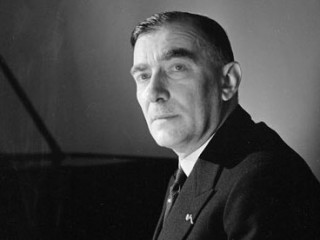
Karol Szymanowski biography
Date of birth : 1882-10-06
Date of death : 1937-03-28
Birthplace : Timoshovka, Ukraine
Nationality : Polish
Category : Famous Figures
Last modified : 2011-08-31
Credited as : Composer, The Love Songs of Hafiz ,
The Polish composer Karol Szymanowski treated national subjects in an original and highly effective manner.
On Oct. 6, 1882, Karol Szymanowski was born at Timoshovka in the Ukraine to a wealthy, highly cultured Polish family that encouraged his obvious musical talent. While still in his teens he wrote elegant pieces for the piano obviously inspired by Frederic Chopin. In 1901 he entered the Warsaw Conservatory, and after graduation he went to Berlin in 1905. There he and three other young Polish composers founded a society called Young Poland in Music. In 1908 Szymanowski returned to Timoshovka. He spent the years 1912-1914 in Vienna.
Compositions of this early period are numerous piano pieces—Preludes (1901, 1905), Etudes (1902), and Variations (1901, 1904)—introduced by Artur Rubinstein in his concerts; and violin pieces—a Sonata (1904), Romance (1909), and Notturn e tarantella (1914)—introduced by Paul Kochanski. The Love Songs of Hafiz (1910, 1914) and the opera Hagith (1912-1913) reflect Szymanowski's interest in Oriental mysticism and philosophy.
Szymanowski's Mythes (1915) is a set of three pieces for violin and piano. The second of these, the Fountain of Arethusa, became his best-known and most frequently performed composition. Over a shimmering, dissonant piano part the violin soars in arabesque-filled melody. The harmonies are dissonant but are treated in the impressionist manner, not for their tension but for their color.
The Szymanowski family estate was lost in the 1917 Revolution, and the composer's affluent position changed overnight. In 1920 he went to Warsaw, where he lived until 1935.
During the 1920s Szymanowski's compositions became known to a wider audience through their inclusion in the annual programs sponsored by the International Society of Contemporary Music, and he emerged as Poland's most eminent composer. He became director of the Warsaw Conservatory in 1926. At this time Szymanowski's works began to reflect his national heritage. Harnassie (1926) is a ballet-opera based on Polish peasant music and traditions, similar to Igor Stravinsky's treatment of Russian folklore in Les Noces and Bohuslav Martinu's use of Czech themes in Spalicek. Szymanowski's Stabat Mater (1928) for solo voices, mixed chorus, and orchestra reconciles Palestrina counterpoint with Slavic melodies. A cycle of 12 songs (1930) was inspired by the folk music of the Kurpie region of Poland. Other important compositions are the Second Violin Concerto (1930) and the Symphonie Concertante for piano and orchestra (1932), both distinctly Polish in character.
Szymanowski died of tuberculosis in Lausanne, Switzerland, on March 28, 1937.
















